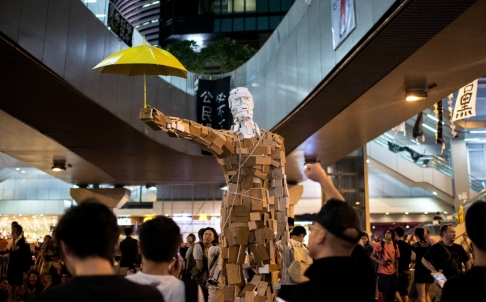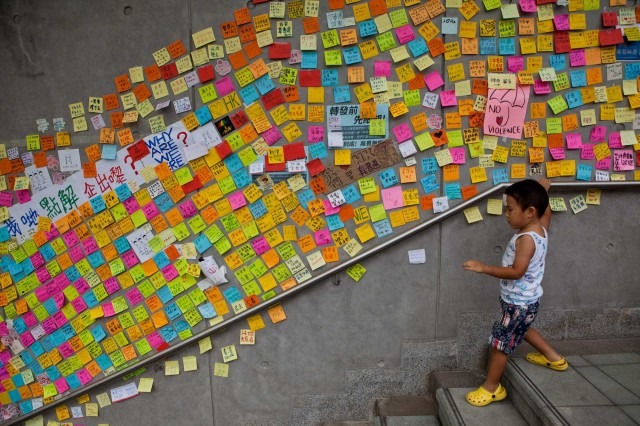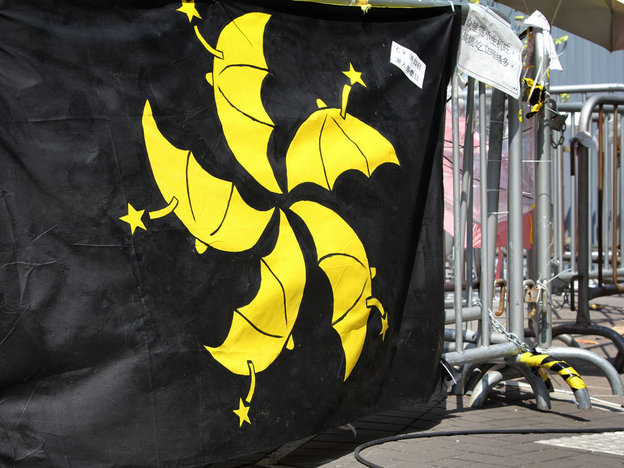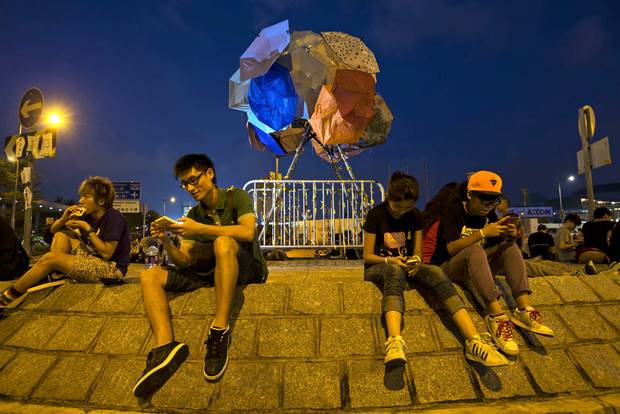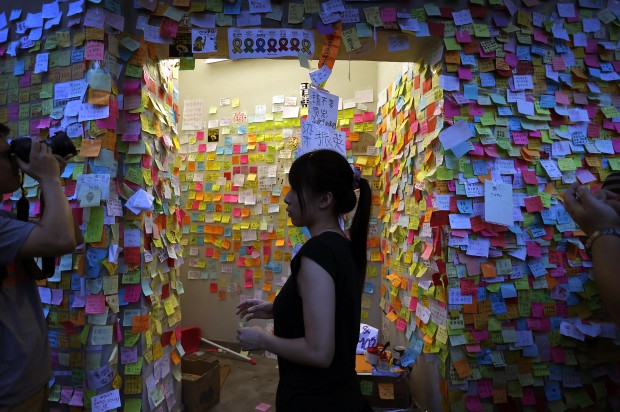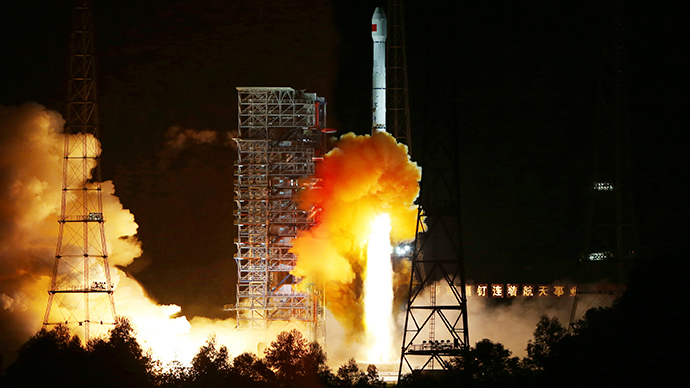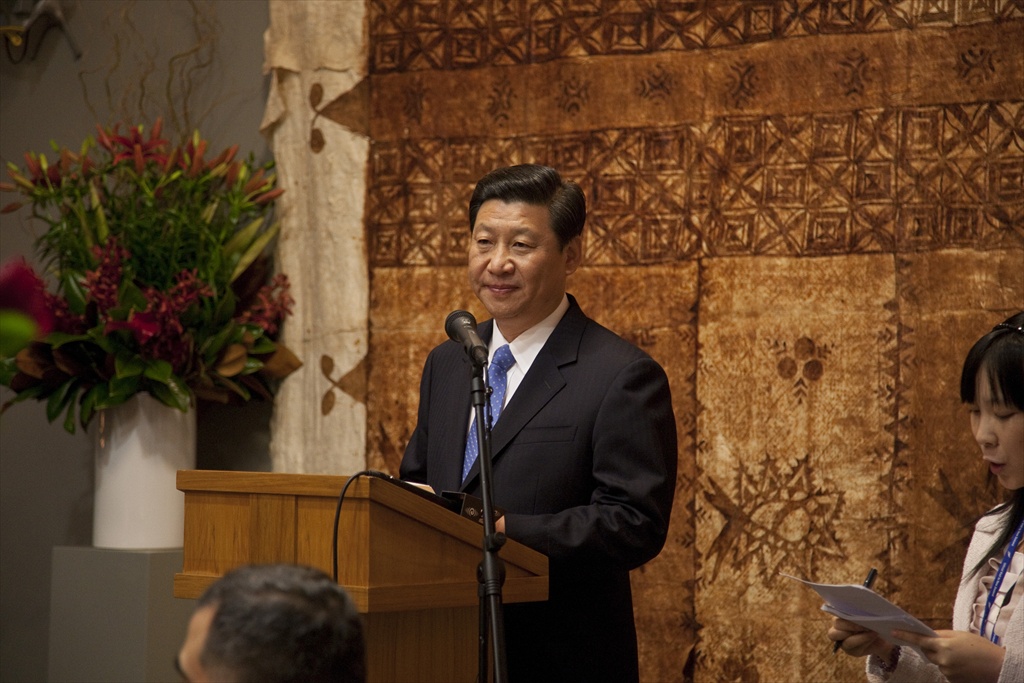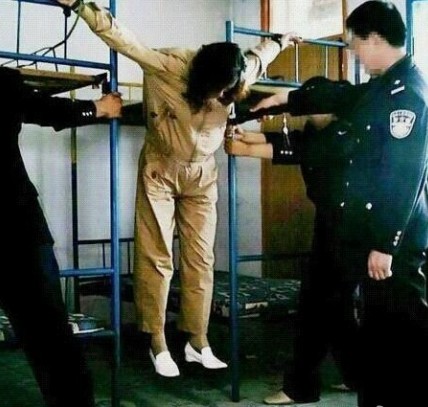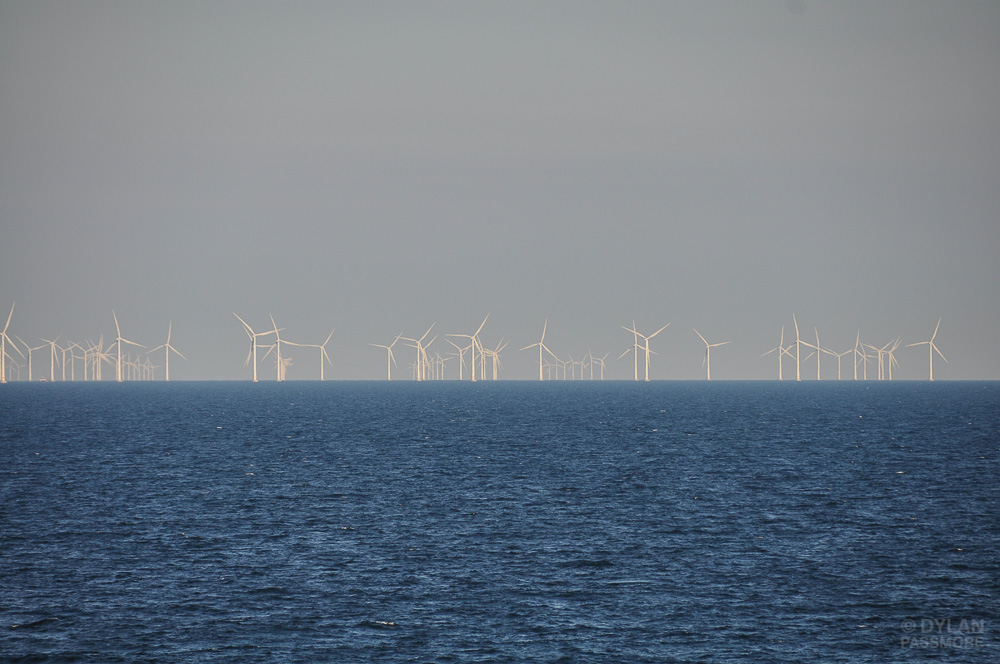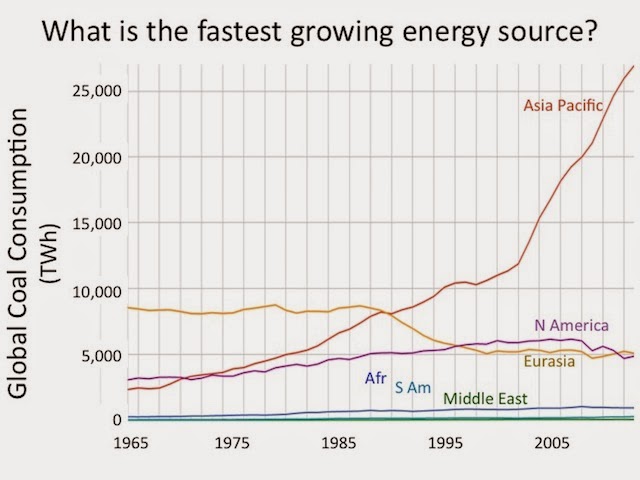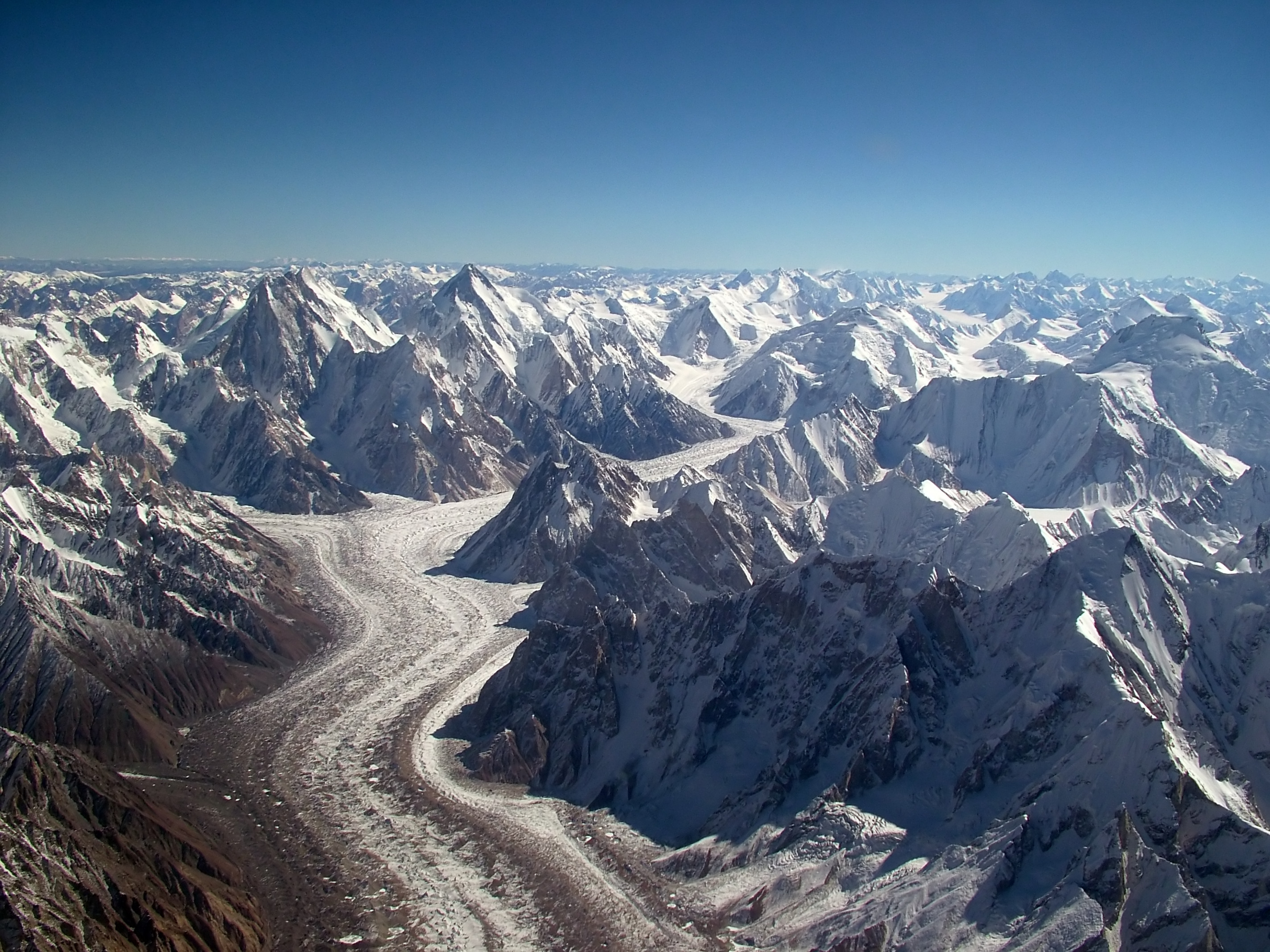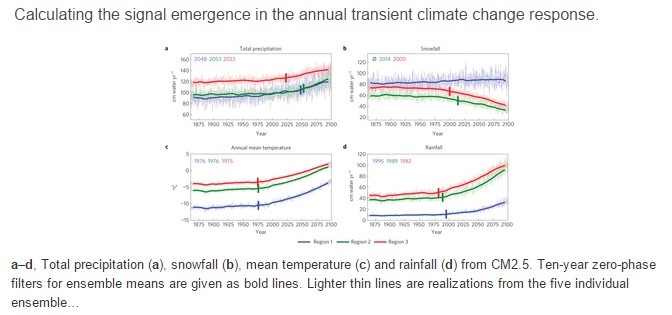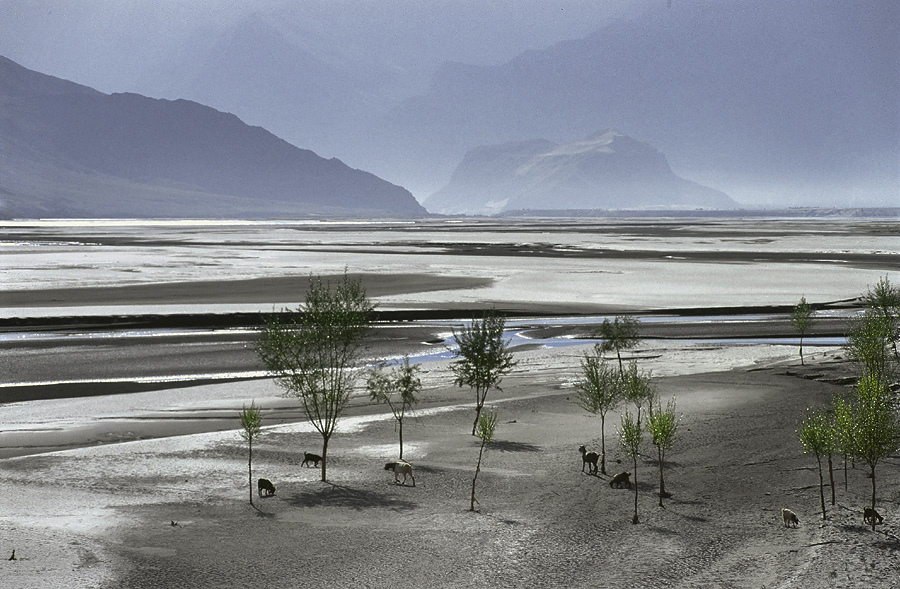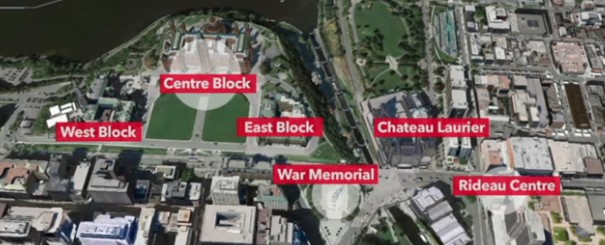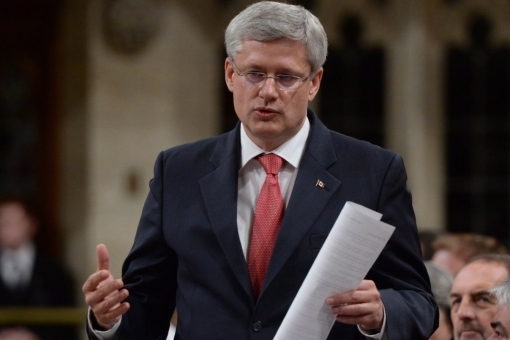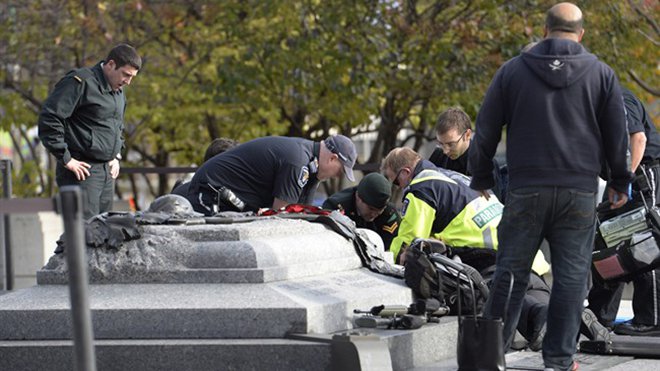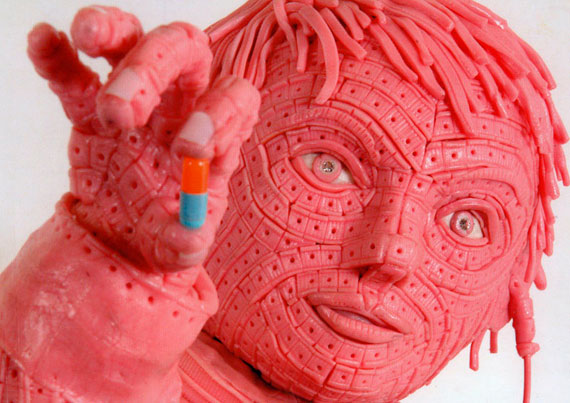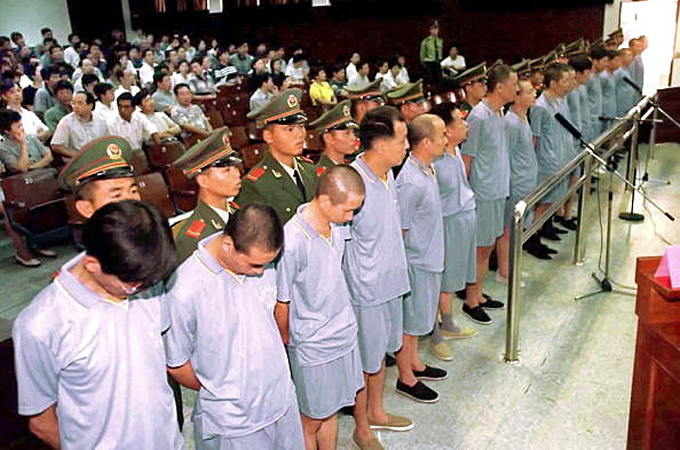Wary that Hong Kong police might move into protest areas and destroy the array of art created inside the grounds of the democracy movement, a 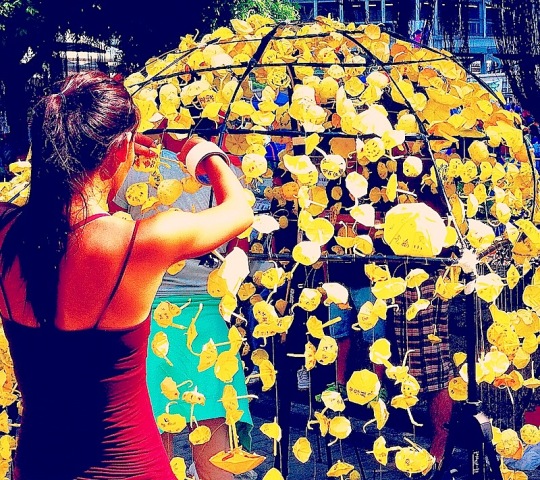 band of “art guardians” has been standing by in case they are needed.
band of “art guardians” has been standing by in case they are needed.
The protests have extended over a month, calling for greater democracy within Hong Kong. The Chinese government continues to deny the calls.
Within the kilometer-long stretch of highway opposite the government headquarters that is the site of the ongoing protest, many pieces of protest art have been created–including the famous “Umbrella Man,” a 12-foot tall wooden sculpture. The umbrella is symbolic of the defense of the people against police batons as well as rain and tropical heat.
New works are constantly being made. Demonstrators sketch chalk art on roads and fold origami umbrellas. Almost all of the walls and pillars is now decorated with art.
The art guardians are ready to protect this art, should police be called in, according to the members.
“Their job is to call me,” Meaghan McGurgan, who runs a theatre blog and founded the Umbrella Movement Art Preservation group. “I can then mobilise the rescue teams standing by.”
This is a people’s art, according to McGurgan. “Everyone can see it, everyone can go, everyone can participate.”
There is currently nowhere for the art to go, however.
“We phoned the museums,” McGurgan said. “They either didn’t get back to us, or said they wouldn’t take the art as it was political. I thought that was really sad.”
A dozen art galleries have offered to take the works temporarily.
Even the “Lennon Wall”–a wall covered in thousands of sticky notes posted by both supporters and detractors of the movement–will be reassembled, according to McGurdan.
“We’ve taken large-scale photographs from far away and gridded them off into sections. If necessary we can put it all together again like a puzzle later on.”
As a last resort, the art guardians will allow the art to be destroyed, McGurdan said. If the police move in and the guardians can’t safely get the art out, they will do their best to document “the destruction of something beautiful”.
By Sid Douglas
